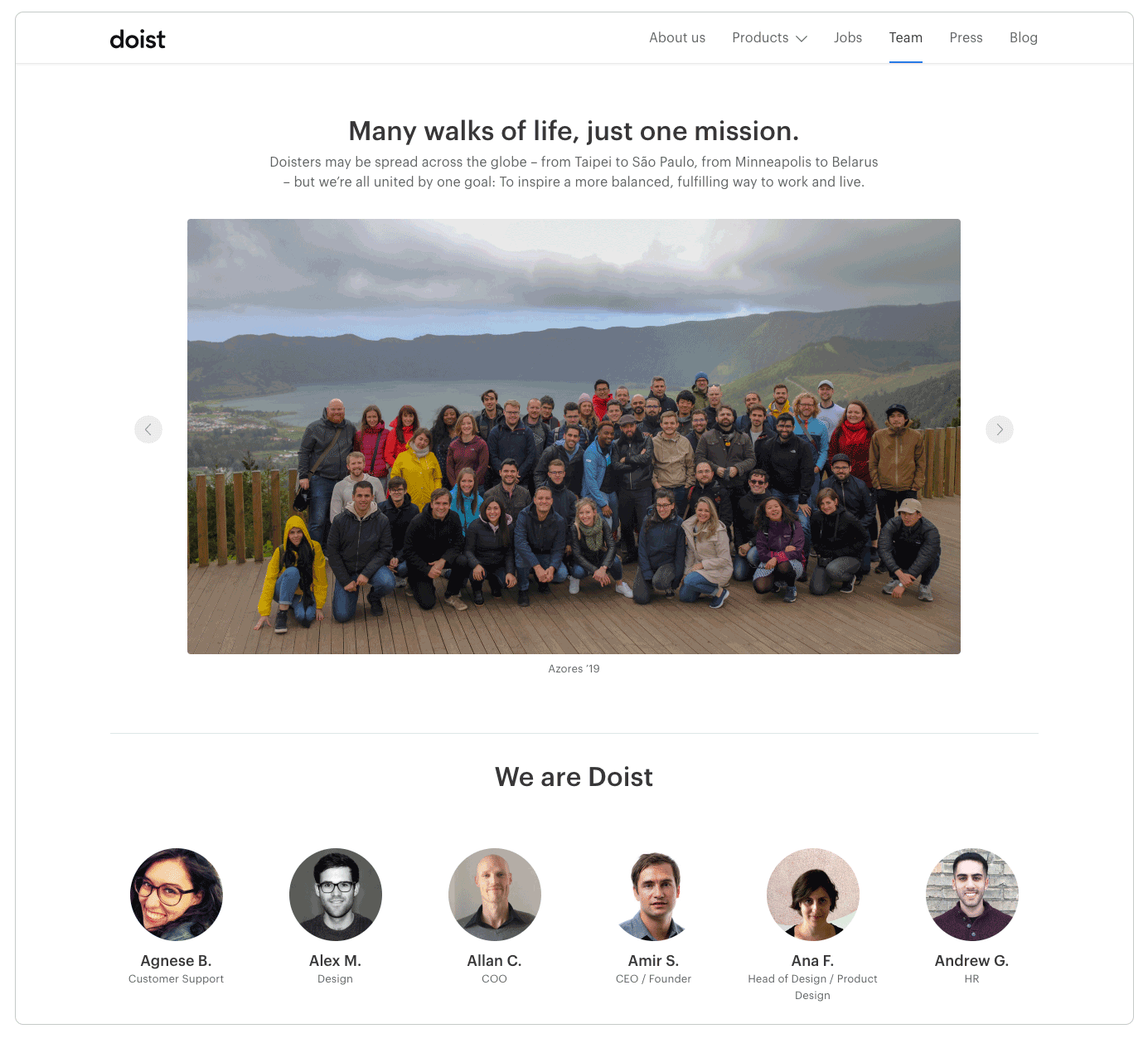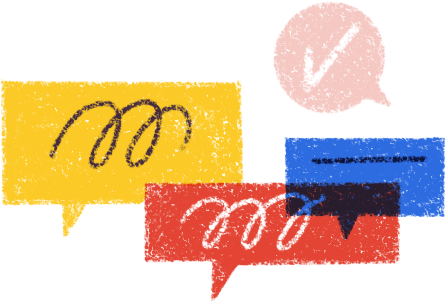Remote companies have an outsized advantage that’s rarely mentioned: hiring from around the world gives your team a range of global experiences, perspectives, and expertise. This is especially valuable if you’re building a product or service for an international user base.
A team that’s reflective of your customers is only the start of the benefits of hiring remotely:
Exceptional Talent: Expanding your hiring pool from “local” to “global” gives you access to the most talented people in the world.
Increased Retention: Remote work opportunities remote work provide team members with flexibility that’s correlated with higher job satisfaction and retention.
Reduced Costs: Remote teams can opt out of expensive city hubs like San Francisco and New York and decrease operational costs.
However, hiring the best across borders isn’t without its challenges. Additionally, once you’ve made a great hire, proper onboarding is crucial for keeping them. This guide will distill down the lessons we’ve learned in growing our team at Doist to 69 people across 25 countries and 52 cities. We’ve also included advice from remote teams like Help Scout, Buffer, Automattic, and WeWorkRemotely on how they’ve scaled their teams.
"Talent is equally distributed, opportunity is not." – Leila Janah
Talent exists in every corner of the world; the challenging part is attracting individuals with these special skills to your company and providing them with the tools and structure to thrive. Learning the best practices for hiring remote team members will unlock the potential of your team and help you move towards your company’s mission.
 Hiring For Your Remote Team
Hiring For Your Remote Team
Hiring remotely presents a handful of challenges:
Remote roles often attract hundreds of even thousands of candidates, making screening a challenge.
Remote work requires a high degree of independence, making it essential to find individuals who display qualities like autonomy and self-motivation.
With the importance of asynchronous communication on remote teams, it’s necessary to hire above-average communicators.
We’ll cover how to address these challenges and build a remote team with people from around the world.
Choosing When To Hire
One of the biggest hiring mistakes is hiring too quickly. Oversaturating your team with new hires can be overwhelming for everyone involved. In the case of remote work, where onboarding can be particularly involved, having too many individuals onboarded at once is far from ideal.
Before making hiring decisions, identify the strengths and weaknesses of your existing team and ensure that everyone is working in their personal “zone of genius”. When you’ve done this, it’s simpler to grow your team and hire people who can address your weaknesses and level up your team.
Having processes on a remote team is essential. However, process is not a constant – it can break down and necessitate iteration or rethinking. This can especially be the case if a team grows too quickly and processes that worked with 13 people break down once you hit 30 people.

Amir is the founder and CEO of Doist – makers of Todoist and Twist.
We built Doist on the idea of sustainable growth. If we’ve hired a lot of people recently, we’ll do a temporary hiring freeze in order to integrate them and adequately adjust our processes.
Be intentional about when and why you hire and ensure processes are in place beforehand to make transitions easy. On a remote team, integration can take time, particularly if you opt to hire someone who has never worked remotely before.
| Good Reasons to Hire | Bad Reasons to Hire |
|---|---|
We lack a specific area of expertise and gaining it will help us to do x, y, and z. Hiring will alleviate some of the pressure on existing teammates and allow them to do more high-impact work. We want to start a new project/division/product and lack the in-house knowledge to do so. | We raised a round of funding. We’re overwhelmed and just need a new hands, anyone will do! We’d like to scale and increasing headcount is the way to do it. |
While it’s normal to feel pressure to hire when your team is at capacity and you’re slowed down, taking time to deeply consider the skillset you’re hiring for and how they’ll fit into the wider team is imperative for a smooth transition for both new team members and the existing team.
Selling Remote Jobs
You can safely assume you’ll see a high volume of applicants for a remote role – the demand for flexible roles is high, and often applicants are undiscriminating in the roles they apply for. However, quality is more important than quantity. Write a comprehensive job description that will help bring in high-quality applications from strong candidates.
Clearly outline the role
Make the role and responsibility clear to potential hires. Be explicit about what the role looks like and even what a “day on the job” entails. Include prior relevant experience that would be helpful for role, the responsibilities they’ll have, and who they’ll work with. If both sides have as much information, you’re bound to have a better match.
Highlight your team culture
Your company page and job description may be someone’s first introduction to your company and team culture. Ensure that you’re putting your best foot forward and providing ample insight into what it would be like to work there.

People Operations, Doist
The company’s mission and values, and how they are put into action, are the most important things to communicate when attracting talent. These provide a foundation for the relationship between company and candidate.
Describe your company’s top values
Tell your company’s vision for the future
Share about your using photos and descriptions

Mention your perks
Mention some of the extras that come with the job including competitive compensation, generous vacation time, health and fitness allowances, co-working stipends, and more.
If your company isn’t at the stage where you can afford these perks, emphasize the flexibility or remote work and a team of interesting, kind, and driven people.. Additionally, get candidates excited about your products or services and the opportunity behind them. Joining a company is making an investment for the future; woo potential candidates like you would an investor. Like investors, candidates will do their due diligence about your company - be forthcoming and truthful. There’s a fine line between enthusiastically describing an opportunity and embellishing reality.
Define “remote work”
“Remote work” has a variety of meanings:
Flexible work arrangements at an office-role
A 100% remote role at a company with an HQ
A 100% remote role at a fully remote company
There are countless variations of remote work. Be clear on whether a new hire can truly work from everywhere or must come to the office with the occasional ability to work from home Also, be explicit about where you hire from. If you’re offering a remote job, but only hiring from North America, note this so you don’t have candidates applying from Europe and Asia. See our remote team setup guide for options on hiring internationally.
Ask for application questions or a cover letter
Application questions or cover letters are an opportunity to see how a candidate communicates. This is invaluable on remote teams where asynchronous communication makes up the majority of collaboration. Having candidates demonstrate their writing ability early in the process will help you determine if they have the communication skills required to thrive in a remote environment.
Use inclusive language
Be cognizant of the language you use in job postings that could be viewed as exclusionary. Have multiple people on your team review the job posting to spot any non-professional verbiage (i.e. “rockstar”, “wizard”) that candidates might find off putting. For extra assistance, pass your job posting to industry peers or run it through a service like Textio, which assesses the sentiment and impact of your writing.
A job description shouldn’t be thrown together. It should serve as a source of truth as you assess candidates and see how they measure against the must-haves and nice-to-haves of a role.
Sourcing Candidates
If you’re a remote team, particularly one hiring from all around the world, your company is likely more diverse than average. The flexibility that remote work provides can be valuable for a wide range of individuals.
Women, who are often primary caregivers, can find meaningful work that is flexible.
Individuals with disabilities can work from the comfort of their home and do great work.
Without having the need to relocate to expensive hubs, remote work is accessible to people from more socio-economic backgrounds.
However, this doesn’t mean you should rest on these generalizations. Be proactive in sourcing candidates far-and-wide to find great talent and build a diverse and inclusive team that’s reflective of the people who use your products or services.

Talent and Culture Lead, Help Scout
Hiring a diverse team of people takes intention and thoughtfulness. LinkedIn is always the major place to start for sourcing, but I also love using Twitter and getting lost down rabbit holes seeing who people follow and what everyone’s talking about. We also post our roles on Tech Ladies, Power to Fly, POC in Tech, and other targeted job boards depending on the role. It’s essential to make sure your hiring process is fair and that you remove as much bias as you can. Every single human has bias, but what’s critical is becoming aware of your biases and knowing what pitfalls are possible so that you can do your best to avoid them.
Here are other important candidate touch points and places to recruit:
Your Website: These inbound candidate leads are often extremely high-quality. These individuals may be already familiar with your products and services and want to work for your company, not just any remote company. Ensure you have a great “About Us” or “Hiring” page that includes details about your company and culture. Good examples include Stripe’s Life at Stripe page, Buffer’s Journey page, and Help Scout’s Career page.
Remote Job Boards: People who have a specific desire to work remotely frequent online job boards that filter for remote positions or are entirely dedicated to remote work jobs. On the downside, these can yield candidates who are only interested in a remote role and have little interest in your specific company.. Alternately, they can attract people who have worked remotely before and could thrive on your team. Good examples include AngelList, Remotive, Remote, and WeWorkRemotely.
Diversity and Inclusion Job Boards: Often jobs on these websites are vetted to ensure that less-represented or minority candidates will join teams that are diverse and inclusive. Gender specific job boards include TechLadies, PowertoFly, and Elpha. Jopwell is an ethnicity specific job board while Out in Tech is an LGBTQ+ specific job board.. There are also boards dedicated to individuals who are 50+, veterans, or have disabilities.
Extend your search and recruit broadly to ensure an applicant pool thats holds a number of promising candidates.
Identifying Strong Remote Characteristics
Remote work is not for everyone. Many people imagine some of the plus sides: flexibility, the ability to work from home, and the chance to travel and embrace digital nomadism. Few people recognize some of the down sides: isolation, anxiety, and depression.
Over the years we’ve identified indicators that can be good predictors of whether someone will be able to work effectively on a remote team.
Independence
The ability to self-direct and act independently is crucial on a remote team.

CTO, Doist
Working remotely involves a lot of initiative, ownership, discipline, and communication challenges. On top of this, each company has its own set of core values. It’s important to assess candidates from a perspective that is aligned with these. For example, seeing that an engineer is the creator or active maintainer of an open-source project is a big plus. It showcases initiative, discipline, and communication. There are many other hobbies that convey relevant traits.
Managing a remote team means you won’t be able to hand-hold or provide constant direction. Look for this trait while screening applications.
Some indicators of independence include the following:
Starting a business
Working in a freelance capacity
Having side projects
People who’ve demonstrated they can take initiative in the past are likely to do the same in a remote role.

Engineering Manager, Buffer
We look for evidence of initiative and a self-directed attitude, since working remotely can be an overwhelming amount of freedom and responsibility. This could be through previous remote experience, but it could also be time spent free-lancing or doing contract work, being self-taught as a developer, or having had broader life experiences where the candidate needed to be highly self-motivated.
Strong written communication
Asynchronous communication is the foundation of remote work communication. Read through a candidate’s resume, cover letter, and application questions to understand how they communicate. If you’re arranging the first interview with a candidate, note whether they specify time zones while mentioning their availability. These small details can provide clues on thoughtfulness when it comes to communication.
Balance
Leadership teams at remote companies often have an initial fear that allowing remote work might mean less work overall. On the contrary, it’s overwork and burnout that should be your core concern. Look for candidates who demonstrate they have interests outside of work and don’t use phrases that indicate workaholic tendencies in their application (i.e. “I’ll be available 24/7” or “I can code 12 hours/day”.)
There are no hard and fast rules of who will succeed while working remotely. However, as you hire more over time, you’ll begin to see certain patterns emerge that make finding remote-ready employees much easier.
Interviewing Candidates
Remote work interviews, generally done over video calls, help you form a fuller picture of a candidate. This is where you can lean into their backstory, uncover how they think, and get a sense of what it would be like to have them on your team. On a remote team, where team culture can be specific and tight knit, look for someone who demonstrates cultural contribution. These tips on interviewing candidates will help you make the best decision possible.

Head of Support, Doist
Communication is key to the hiring process. By effectively working together, sharing information and addressing concerns, the hiring committee should ensure no stone is left unturned. There should be no ambiguity about a candidate and all discussions should be underpinned by well-sourced arguments.
Use multiple interviews
Form a hiring committee for sourcing new team members and have several people from the committee interview them. This could be someone from your Human Resources or People Operations team, someone who would work closely with them, and their direct manager Be respectful of the candidate's time and, at most, hold 3 interviews that don’t exceed one hour. Getting multiple perspectives on a candidate will help minimize any blindspots. It’s also an opportunity to introduce them to your team.

Director of People, Buffer
We have one teammate as the main point person accountable for recruiting and hiring, but have them enlist help from all over the team. Lots of teammates are involved in interviewing at Buffer as a way to grow their leadership, support our culture, and introduce candidates to our diversity.
Several interviews can also serve different purposes. For instance, with hiring Engineers, interview one could assess cultural fit/cultural contribution and work history, interview two could assess technical skills, and interview three might be a behavioural interview.
In The Making of a Manager, Julie Zhuo, the VP of Product Design at Facebook, notes the following about multiple interview:
“Having multiple interviewers can reduce bias and catch subtle red flags that any one person might have missed. When debriefing, however, each person should independently record their rationale and their final “hire” or “no hire” decision before hearing other interviewers’ thoughts to ensure that the discussion doesn’t lead to groupthink.”
Ask Thoughtful Interview Questions
Don’t waste time with questions that have little relevance to how a candidate would do the job when hired. Focus on asking questions that give you true insight into their skills and ability to work remotely. Ask questions related to how they problem solve, whether they can work independently, and how their values align with that of your company. Try to use the same questions with each candidate so you can more easily judge a “good answer” vs a “bad answer”.
| Good General Interview Questions |
|---|
|
While general questions are important, you should also crafit questions that are tailored based on the role. For instance, here are the questions that Doist’s Head of Support, Malin Schiber, uses when assessing someone’s fit for a Customer Support role:
What strategies do you use to build empathy and trust with customers?
What’s the best customer service experience you’ve ever received? What was the worst?
What kind of value would you extract from customers to improve our products?
What drives your passion for customer service?
What unique skill set would you bring to our team to positively impact customers?
When was a time you had to handle an angry or dissatisfied customer?
Ensure you treat the interview as a two-way conversation. Be open and forthcoming with any questions they have so they can get an accurate idea of your company.

People Operations, Doist
Make the process as transparent as possible. Let each candidate know what the stages look like and who they’ll talk to. Transparency also plays out throughout the interviews where there is an opportunity to let the candidate know what it’s really like to work at your company. By being open about what you enjoy and what challenges you about working at your company, you establish trust and can help a candidate make a more informed choice about whether your company is truly the right fit for them.
Assess their performance and answers
During and after the interview, evaluate their answers and how they approached the interview as a whole.
Did they come prepared with knowledge about your company?
Did they take the interview seriously and find a quiet location and dress professionally?
Were they concise in their answers or did they ramble?
Assess everyone with the same criteria and compare notes with other members of the hiring committee before making a decision. At Doist, we use a “Hell Yeah, or No” heuristic, borrowed from Derek Sivers, when determining if someone new joins our team. Additionally all 3 people on our hiring committee have to agree on a candidate. It can be helpful to create your own general rules around hiring to streamline the evaluation process.
Creating Test Projects
A test project is crucial when hiring for a remote company. It’s a good indicator of how someone will perform on your team because it mimics real-world conditions.
Follow these guidelines when giving test projects:
Provide a time constrained assignment relevant to the work they would do in the position
Give them the space to work on it independently, but be responsive to questions
Only use test project in the final round after several interviews
Pay candidates for their time

Principal Designer at Help Scout
Candidates who don’t clarify any questions they might have and produce a poor final project are unlikely to thrive in a remote setting. Candidates who effectively work within the time constraint to produce incredible work will make a good addition to your team.
Closing a Hire
Once you’ve decided to hire someone, move quickly. Great candidates are often interviewing elsewhere and may already have another offer in hand. The hiring process is equally their assessment of a company: if you’re non-responsive or slow to extend an offer, it will leave a poor impression of your company. This is particularly the case on a remote team, where you never want a candidate to feel cut off from a stream of steady communication.
In extending offers and closing candidates, consider the following:
Be fair in pay negotiation and compensate candidates in accordance to market rates and their previous experience.
Work with your Human Resources/People Operations to draft and extend a written offer letter with the terms of their employment.
Do not extend “exploding offers” that give candidates an unreasonable deadline (i.e. “48 hours”) to accept an offer before it goes away.
Follow-up frequently if you don’t hear from them and note your enthusiasm about the prospect of them joining your team.
Work with them to determine an appropriate start date that lets them wrap up their role at their current company.
Conclusion
Remote hiring brings a world of opportunity: it's a privelege to hire from across the world and build a diverse team of interesting people. However, it also comes with challenge at ease phase of the hiring cycle.
With tools and tactics to make remote hiring easier, it's our hope that big companies and startups alike embrace the power of hiring beyond borders to build a truly remote team.

